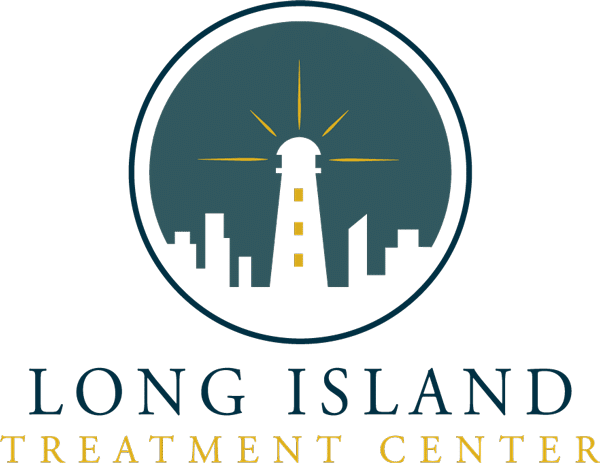Alcohol is at the center of most of our social interactions. You can’t go to dinner or an office party without someone offering you a drink.
For the most part, you can enjoy these beverages as long as you drink responsibly. Yet, if consuming alcohol becomes a regular occurrence, or you feel like you need to drink to feel normal, then you may be facing an issue.
Alcoholism is a significant issue in our society, and it affects a large portion of our population. In fact, about 15 million individuals in the US deal with this addiction.
Unfortunately, this alcohol abuse problem can have a significant negative impact on your mental well-being and might cause physical health conditions or health problems.
Luckily, there are many facilities, like the Long Island Treatment Center, that offer alcohol treatment. This is a medical plan that can help you overcome alcohol addiction.
So, if you’d like to learn more about alcohol treatment, you’ve come to the right place. In this article, we’ll walk you through everything you need to know about the recovery process.We’ll also cover the different types of treatment that can help with alcoholism.

Table of Contents
Alcohol Use Disorder Overview
Most adults in the US enjoy the occasional alcoholic drink. In fact, according to Gallup, about 63% of the population reported using alcoholic beverages.
Although, that doesn’t mean that the majority of American citizens have a drinking problem. If you can partake in alcohol and maintain your duties, responsibilities, and daily routine, drinking can be a fun pastime.
Yet, when consuming alcohol gets in the way of your schedule, then it becomes an issue.
According to the Mayo Clinic, alcoholism is the inability to control your drinking habits. While this may seem like a straightforward explanation, there’s a lot more to the disorder than meets the eye.
In reality, when an individual is struggling with an alcohol use disorder, they’re incapable of functioning without a drink. This can take a massive toll on their physical and mental well-being.
That’s because, like many other addictive substances, the chemical can cause alcohol dependence. That means it can alter the way your brain responds to stimuli.
This will make leading a fulfilling life next to impossible.
On top of that, unlike other addictive drugs, alcohol is readily available all over the country. On top of that, it’s socially acceptable to drink alcoholic beverages at public events.
Because of that, people can develop alcoholism in a flash, without anyone around them noticing.
Besides that, it can be challenging for addicts to admit to themselves and their loved ones that they have a problem. That’s why alcohol treatment can be a little tricky.
Thankfully, the Long Island Treatment Center can provide specialized treatment for individuals who suffer from alcoholism.
The facility will rely on several recovery methods to get the alcohol dependence under control. Plus, it can help addicts rejoin society quickly and safely.
Symptoms of Alcoholism
As we mentioned, it’s easy to develop an alcohol habit without alerting the people around you. This can make identifying alcoholism a little challenging.
So, to make your life easier, we’ll cover some telltale signs of the disorder. We’ll take a look at the common symptoms associated with alcohol use disorders.
1. Personality Changes
One of the earliest signs of an alcohol use disorder is a dramatic change in personality or behavior. This doesn’t necessarily mean the person suffering from alcoholism will act erratically.
Instead, they shift how they interact with the world. For example, they’ll develop irregular sleeping habits and display constant mood changes.
On top of that, alcoholism can affect an individual’s frontal lobe. Because of that, you may notice signs like:
- Impaired judgment
- Poor insight
- Blunted affect
- Reduced motivation
Lastly, alcoholics tend to get incredibly defensive about their drinking habits. They’ll lash out at anyone who points it out and deny the problem exists.
2. Alcohol Cravings
When an addict suffers from alcoholism, they won’t be able to control their cravings for alcohol. They’ll feel an overwhelming need for the substance to function normally.
For instance, when they go out with friends, the only thing on their minds will be to find an establishment that serves hard drinks.
So, from the outside, it looks like the alcoholics’ entire social lives revolve around getting their next fix.
3. Financial Burden
Physical, mental, and behavioral health symptoms aren’t the only clues to a substance use disorder. Spirits and liquors can be exceptionally expensive.
So, constantly buying alcoholic beverages can cost an arm and a leg. Because of that, an alcoholic may face financial burdens as a result of their addiction.
They’ll prefer spending their money on drinks instead of other essentials like rent and utility bills. Plus, some individuals may even go into debt to maintain their alcohol consumption.

Types of Alcohol Treatment
Alcohol treatment isn’t a one-size-fits-all type of deal. Each addict will need a specific plan that’s customized to address their unique issues.
That’s why there are several types of alcohol treatment. In this section, we’ll dive into some of the most notable techniques.
1. Therapy
Right off the bat, therapy is one of the most popular ways to address an alcohol use disorder problem. With this treatment method, a health professional from a healthcare provider will sit with the alcoholic for many hours, over several sessions, and discuss their alcohol dependence.
This will help individuals uncover the reason behind their alcoholism, which should make creating a treatment plan much easier.
Other than that, a therapist can give the addicts tools to manage the effects of alcohol. Plus, they’ll talk about curbing cravings and sublimating.
2. Medical Intervention
Sometimes, talk therapy isn’t enough to help an addict change their ways. That’s because there are physical symptoms of quitting alcohol.
Your body will go through withdrawal, which can cause irritability, involuntary spasms, and even depression.
In that case, you’ll need more than an in-depth look at your drinking history. Fortunately, doctors can prescribe certain medications to ease this pain.
Besides that, they may give you a prescription to deal with other physical ailments. These include disorders like liver failure and high blood pressure that result from alcoholism.
3. Support Groups
While talking to a licensed therapist can be beneficial, it shouldn’t be the only type of treatment an alcoholic goes through. It’s important for them to interact with other individuals who have been through similar experiences.
That’s why Alcoholics Anonymous (AA or Al-Anon) meetings are incredibly crucial. This type of treatment provides a safe space for addicts to talk about their lives and how drinking has affected them.
They can also share tips and tricks to stay clean and how to handle going to events that serve hard drinks.
Lastly, family therapy can also be beneficial in the recovery process.
Alcohol Treatment Plan
At this point, you should have a basic understanding of what alcoholism is and its negative impact. So, now we can move on to treatment.
In this section, we’ll give you an example of a step-by-step plan. This should be able to help alcoholics beat the habit without hurting themselves or the people around them.
1. Admitting to the Problem
Alcoholics will usually have a significant problem scaling back their drinking. So, they’ll refuse to admit they have a problem.
That’s why we often hear addicts say things like, “I can stop anytime I want to,” or “It’s not a problem, I just like to drink to take the edge off.”
Besides that, many addicts tend to be good liars and expert manipulators. They’ll stretch the truth any way they see fit to hide their chemical dependency.
For instance, they’ll hide alcohol bottles around the house and drink after everyone goes to bed.
This can make treatment exceptionally difficult. Because of that, before an individual can go through alcohol treatment, they need to admit they have a problem.
Sadly, this can be a tough and uncomfortable process. For that reason, it’s crucial that you surround the addict with a support system and understanding.
2. Alcohol Detox
As soon as the addict admits to their problem, the next step is alcohol detoxification. Ideally, the addict should be able to quit cold turkey and move on with their lives.
Yet, sadly, the process isn’t that simple. That’s because alcohol causes physical and psychological dependency.
This means the addict’s body and mind won’t be able to function if they stop drinking all at once.
For that reason, it’s best practice to wean the addict gradually. A good rule of thumb is to decrease alcohol consumption by about 10% every day.
If the addict is early enough on their addiction treatment journey, they should be able to complete the process alone.
However, withdrawal symptoms will usually be too much for them to handle without professional assistance.
3. Inpatient Rehab
If an addict has had an alcohol use disorder for years, the only way to ensure they detox safely is to enroll them in an inpatient rehab program like the one the Long Island Center offers.
This is a medical facility that specializes in treating people with addiction problems. The alcoholic will check into the drug abuse rehab for a stint that can last anywhere from a few weeks to a couple of months.
Then, they can leave the facility once they no longer suffer from a chemical dependency.
Moving on, in an inpatient program, professionals will monitor the addict 24/7. Their main goal is to ensure the alcoholic doesn’t relapse.
On top of that, the doctors will help ease the impact of withdrawal. They can prescribe medication that’ll relieve symptoms like:
- Nausea
- Convulsions
- Aches and pains
- Alcohol cravings
- Fatigue
Plus, the professionals will make sure that the addicts can’t hurt themselves while they’re in treatment. Because of that, an inpatient rehab facility is typically the safest way for alcoholics to get clean.
The detoxification can take anywhere from one to two weeks, depending on the severity of the alcohol use disorder.
4. Counseling
Once the symptoms of withdrawal subside, the addict will move on to the counseling stage. As we discussed, alcoholism isn’t just a physical dependency, it can also alter the way your brain functions.
So, even after you flush the alcohol out of your system, there’s plenty of healing to do. That’s when behavioral therapy comes into play.
The addicts will need to take an in-depth look at the state of their lives.
On top of that, addicts need to unlearn many of the behaviors they picked up. For example, they’ll practice radical honesty and maintain a strict sleep schedule.
The process will start with one-on-one closed therapy sessions, which will give the alcoholic a safe space to discuss their issues.
Then, once they’re ready for social interactions, they can move to group therapy sessions like Alcoholics Anonymous meetings.
5. Maintenance
After the counseling stage, the former addict should be free of alcohol and most of the negative habits they created over the years. Now, they can start rebuilding.
Although, this is easier said than done. That’s because alcohol is close at hand.
As soon as they rejoin society, it’ll be incredibly easy for them to slip back into old, destructive habits. For that reason, addicts will have to come up with a maintenance plan.
This step can be difficult to go through alone. That’s why there are outpatient program facilities like halfway homes that offer support services.
These institutions will help recovering addicts create a stable life before they reenter society. They’ll provide housing, counseling, and job opportunities to make the transition easier.
On top of that, outpatient facilities can assist addicts when it comes to figuring out coping mechanisms. They focus on showing the former alcoholic ways to curb their cravings and stop them from falling back into old habits.
6. Reentering Society
Once the alcohol treatment is over, the addict can start rejoining society. At this point, the former alcoholic should have all the tools they need to lead a normal life.
They have tips and tricks that’ll help them interact with the public and build healthy relationships.
On top of that, they’re ready to make amends and fix the connections that the alcohol use disorder caused.
Wrapping Up
Alcoholism is a serious issue that affects a large portion of our population. This disorder can lead to serious mental health issues and physical drawbacks.
Thankfully, there are facilities like the Long Island Treatment Center, a treatment provider and a treatment facility that can help with the problem and experience primary care from the team. They specialize in alcohol treatment services substance abuse treatment, and can provide all sorts of support to patients who has alcohol problem drinking or heavy drinking.
Plus, they can help people like you or your family members with substance use disorders overcome their addiction and rejoin society. Also, the treatment center accepts health insurance to help you pay for your addiction treatment. To get help, contact us today!

